1. Why SEO Is Important For Your Website?
As a marketer, you want to get your company’s name out there. You want people to know about all the amazing products and services you offer. But even if you are publishing content online, it will not have an impact if nobody can find it. This is where Search Engine Optimization (SEO) comes in.
"Search Engine Optimization (SEO) will help you enhance your website content because it will give the website recognition by increasing the web traffic. SEO is the one of the major tools that lead to successful websites."
Thomas Piserchia, Agency M-1 Intern, https://www.linkedin.com/in/thomas-piserchia-02572216a/
Please consider following Agency M-1 on these Social Media platforms.
This blog post was authored by Rachel Sheldon (LinkedIn - Twitter).
1.1 What is SEO?
Search Engine Optimization (SEO): The practice of increasing the quantity and quality of traffic to your website through organic search engine results.
Search engines play a huge role in our everyday lives. We use them for everything from finding where to eat and what to wear, to which businesses we are going to buy from. However, getting found on search engines is not all that easy. When searching online, few people go beyond the first few results.
95% of search traffic goes to websites on the first page of search engine results.
1.1.1 Understanding how search engines work
Your goal is to make it to that first page — but how do you do that?
First, you need to understand how search engines work in the first place. Search engines have three core functions: crawl, index, and rank. These functions fall into three stages:
- discovery
- relevance
- authority
Search engine bots discover your content by crawling it. This involves finding your web page and taking note of all the content within it. Once your content has been crawled, it gets indexed. This means it is added to the massive database the search engine uses to serve up content to its searchers.
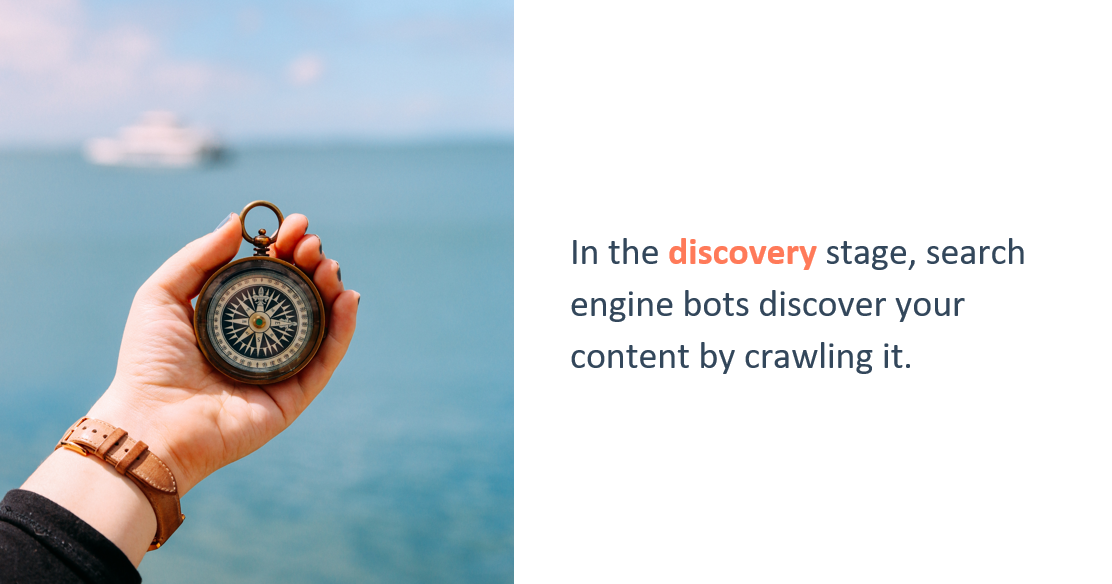
In the relevance stage, bots decide how relevant your content is to certain search queries by indexing it based on topic and keywords. After your content has been crawled and indexed, search engines determine where it should rank in their results based on authority.
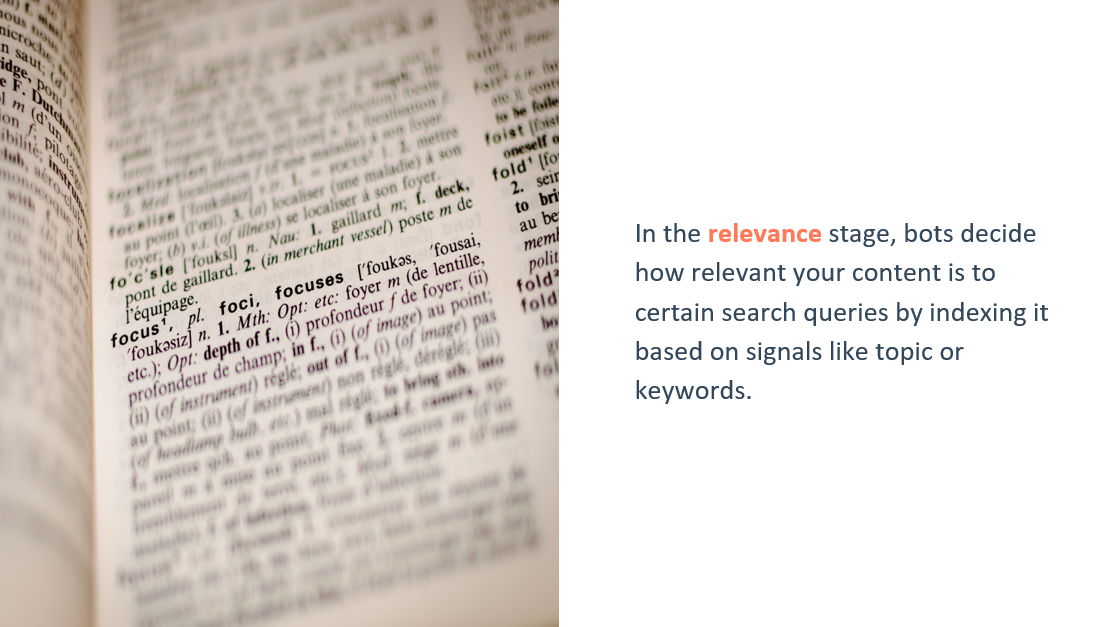
In the authority stage, you need to build enough credibility through backlinks and other factors that search engines consider your site authoritative.

1.1.2 Ranking in search results
Getting your content to rank highly in search results depends primarily on two things: improving discovery and building authority. Improve discoverability by creating lots of high-quality content around the topics you want to be known for. Build authority by getting high-quality backlinks to your website.
Backlinks are links from other websites to your website. The way backlinks work online is similar to how word-of-mouth works offline. The more links you have from other high-quality, authoritative sites to your content, the more trustworthy your content appears not only to search engines but to users.
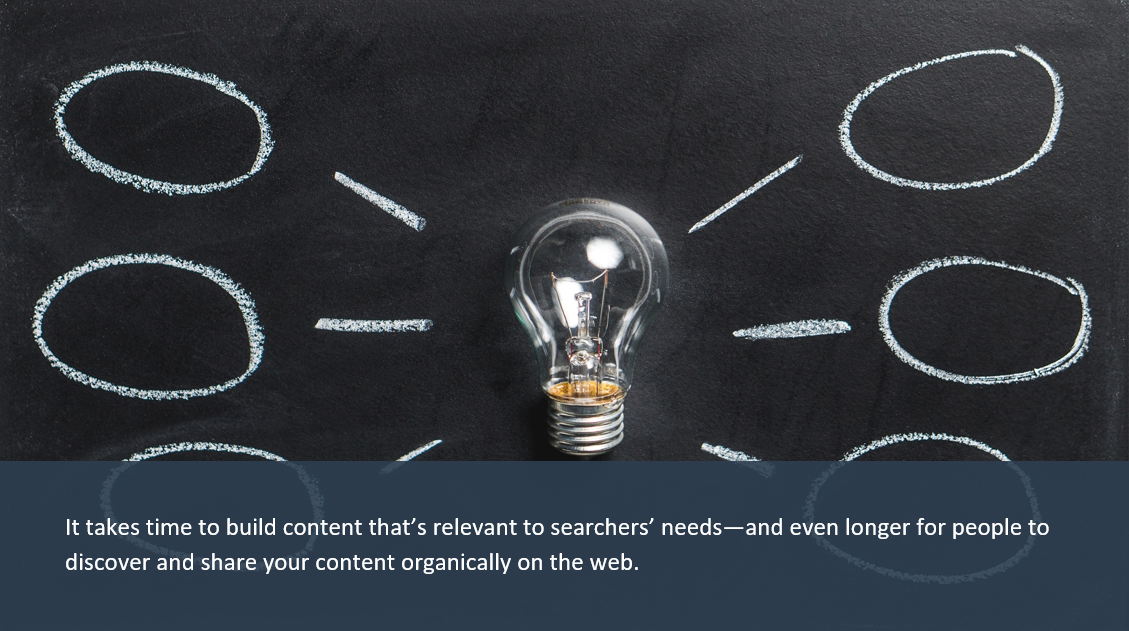
Remember, all this will not happen overnight. It takes time to build content that is relevant to searchers’ needs — and even longer for people to discover and share your content organically on the web.
With that said, do not be intimidated by SEO. It takes hard work and some time to establish strong SEO. But it’s an important — and attainable — aspect of your overall content strategy.
2. How To Optimize Your Content For Search Engines
Search engines today are incredibly smart. They understand synonyms and related keywords, and they use that information to serve up the most relevant content to achieve the goal someone searched for. So rather than just stuffing your content with keywords, you need to both optimize it for searcher intent and make it accessible to search engine crawlers. You can achieve this by following on-page SEO best practices.
On‐Page SEO is the practice of optimizing individual web pages in order to rank higher and earn more relevant traffic in search engines. This is one part of the greater SEO puzzle, but it is an essential one. If you follow best practices, you will ensure search engines can easily crawl and index your content.

In the HubSpot CMS, the Optimize panel is there to help you improve the on-page SEO of your pages and blog posts while you’re creating content. HubSpot will automatically scan your content and give you a checklist of suggestions. Use this list for quick help.
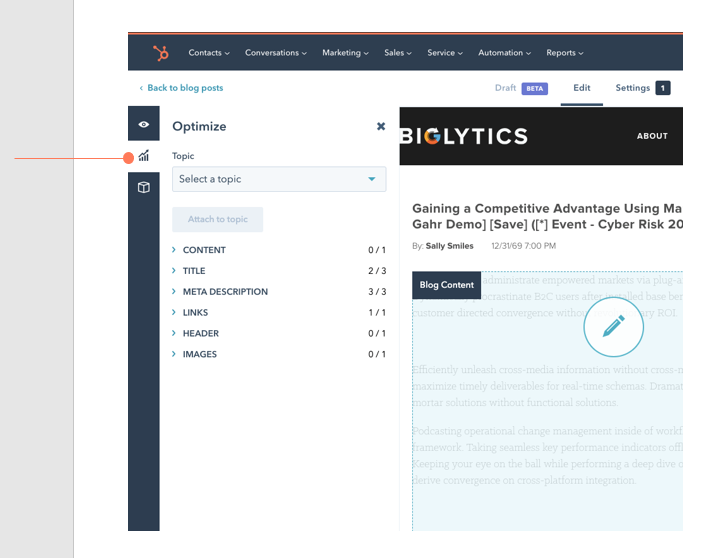
2.1 How do I improve my on-page SEO in the HubSpot CMS?
The HubSpot CMS will check for these things, so these will improve your on-page SEO:
- Word count
- Title
- Meta description
- Headers
- Alt text
- Links
- Topic clusters
How long should your content be? Your content should be long enough to cover your topic thoroughly and keep readers engaged.
There are many different guidelines for content length, and it depends on the type of content you are creating and the topic you’re writing about. HubSpot analysis found that for blog posts, the ideal length is 2100 words.
Next, to write an impactful title, keep it under 70 characters and include your primary long-tail keyword. The words you use in your title influence both what search terms your content ranks for and the click-through rate. The more engaging your title is, the higher your click-through rate will be.
Your title could get cut off in search results if it’s too long. This could result in people overlooking your website.
Along the same lines, include an engaging meta description. A Meta Description is a short summary of your page or blog post that will show up in search engine results. Include the primary search term you’re trying to rank for and be engaging. Ideally, the description is between 155 and 250 characters.
Avoid unnatural repetition of words in your title, meta description, and URL. This is a signal search engines use to detect spam. At best, the repetition gets ignored; at worst, your website could receive a ranking penalty. Next, it is removed from search results.
Use H1 tags for page or blog post titles. It signifies to search engines that this is the main topic of your content. Avoid having multiple H1 headers in your content since this will confuse search engines and users who browse the web with screen readers. Use H2 and H3 headers throughout your content for sections.
Write descriptive alt text for your images. Alt Text, or Alternative Text, is an HTML element used to describe the appearance or function of an image on a web page. For example, rather than saying, “photo of a female” try describing the scene or the colors, the expression on her face, and other details that are important to the image. This will help search engines effectively crawl and index your content. Also, adding alt text makes your content accessible for people who browse the web using screen readers.
2.1.1Should I add links to my content?
Add links strategically throughout your content to helpful external resources and other relevant content you’ve published.
Links help establish you as a trustworthy source and drive traffic to your other content. The Optimize panel in HubSpot checks to make sure you are not including any broken links since that isn’t a great experience for your readers and can negatively impact your SEO. The Optimize panel will also test the load time of your page to make sure it is loading as fast as possible so that visitors will not click away.
The last option in the Optimize panel is to attach your content to an existing topic cluster built in the SEO tool in HubSpot. You can also create a new topic cluster right from inside the content editors. Based on your selected topic and subtopic keyword, HubSpot will look at what themes are covered in other top-ranking content for that search term. Then, a list will populate to show you those themes. You can use this list to gather content ideas to use on this page or in future content within the same topic cluster.
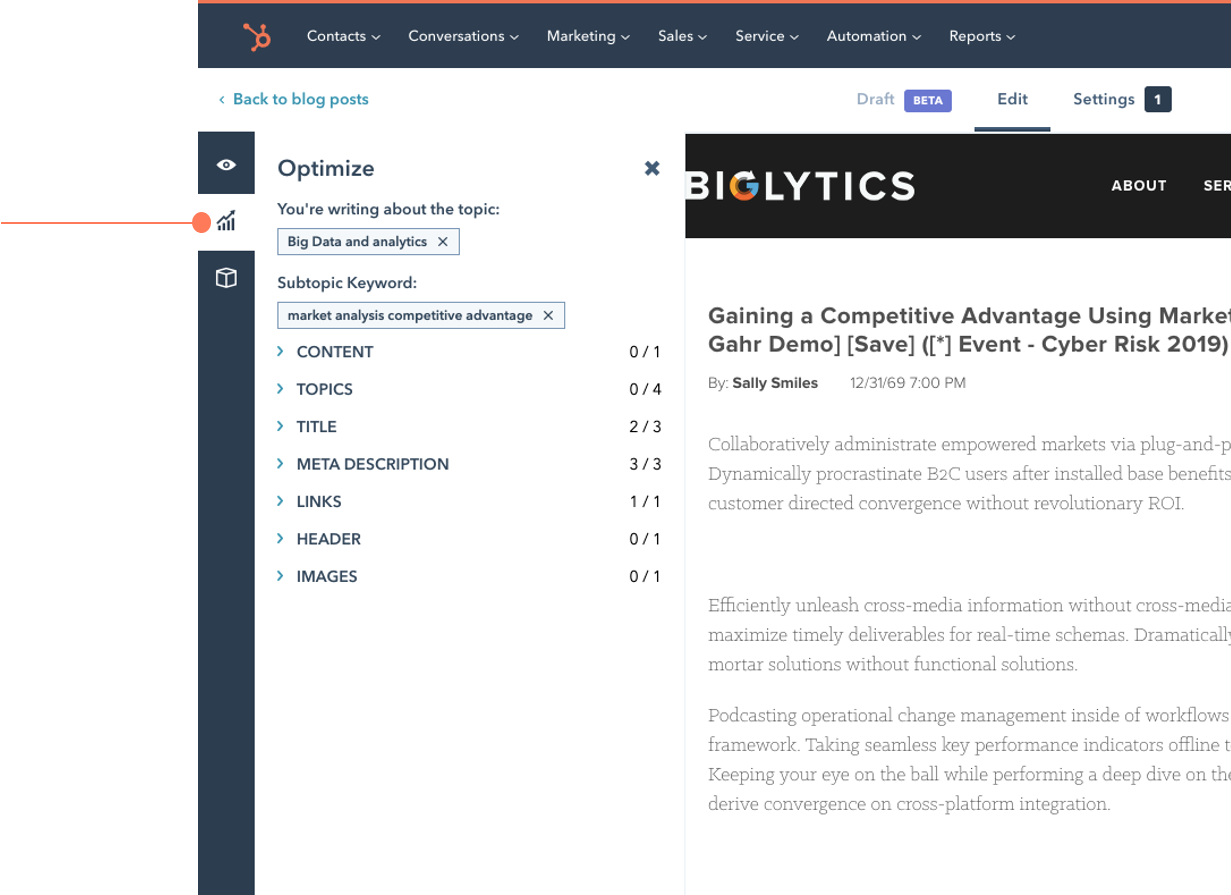
After your content is published, use the optimization screen in the page details to review your on-page SEO, inbound links, and internal links.
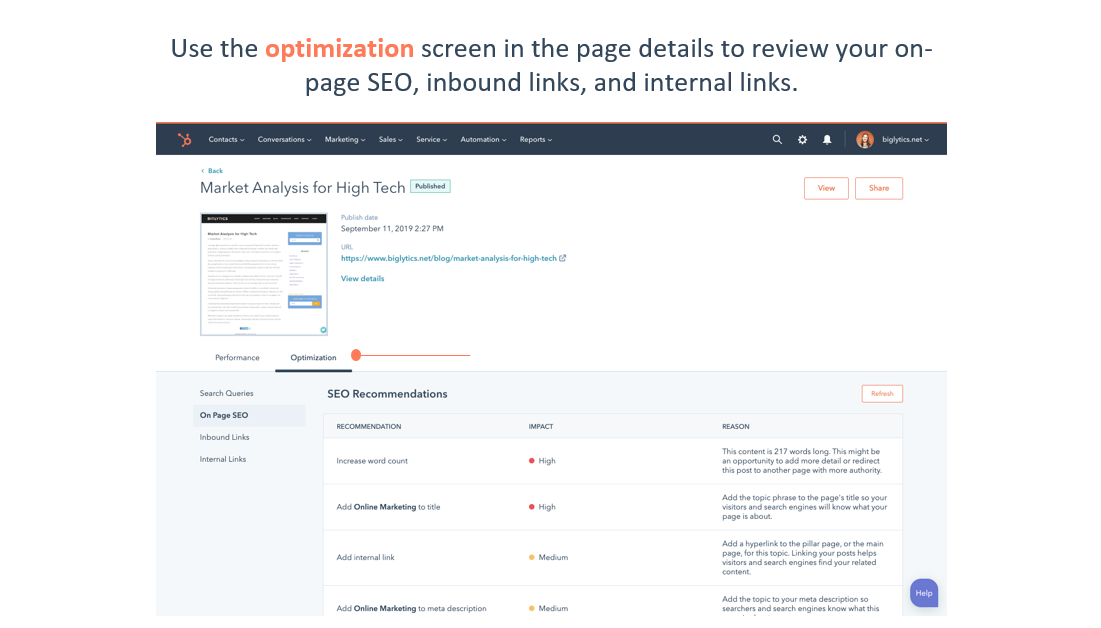
2.1.2 Integrating HubSpot with Google search console
You can also integrate HubSpot with Google Search Console to gain further insight into your content performance. With the Google Search Console integration, you can see the number of impressions, position, click-through rate, and clicks your site receives for different search queries related to your page’s topic.
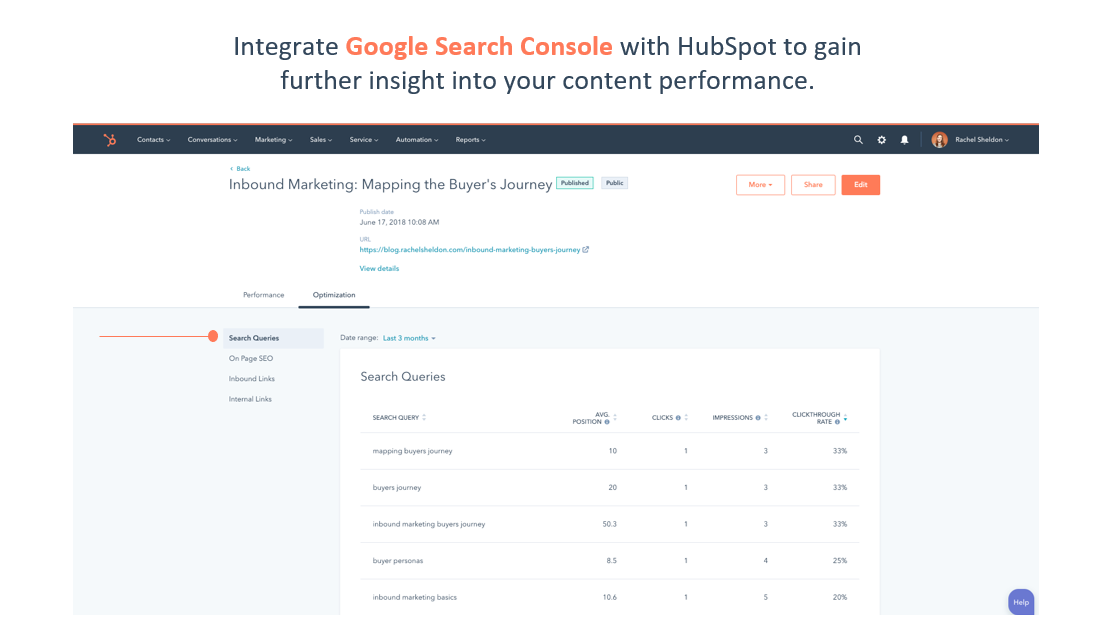
Use the insight you gain from these metrics to better address your audience’s needs by catering your content to what they are searching for. At the end of the day, this is what search engines value most.
3. How To Optimize Your Website For Search Engines?
Technical SEO is the practice of making technical optimizations to your website to improve search results.
These are the practices that impact search engines’ ability to crawl, index, and rank content on your website. Technical SEO is a broad term and covers a lot of different optimization tactics, including everything from improving your site’s speed and security to creating a sitemap and canonical URLs.
Technical SEO is important because it is a bar your website needs to clear in order to get ranked by search engines and avoid inadvertent penalties.
At the end of the day, your content is what will boost you to the top of the rankings. But to even rank in the first place, your technical SEO needs to be good. This might sound a bit scary, but fortunately, a lot of technical SEO is already set up for you by default in the HubSpot CMS.
3.1 HubSpot CMS built-in SEO features
The HubSpot CMS comes with built-in SEO features including:
- Automatic SSL provisioning
- Global content delivery
- Page speed optimizations
If you want to get more granular with your technical SEO, there are several additional options you can configure in the CMS.
First, the Secure Sockets Layer, or SSL, is provided by default to all domains hosted on the HubSpot CMS. SSL is a protocol for establishing an encrypted link between a web server and a browser. This link ensures that all data passed between the web server and browser remains private. To add an additional layer of security, require HTTPS for your domains. This will ensure visitors to your website have a secure browsing experience all the time. You can do this from the “Domains & URLs” page in your account.
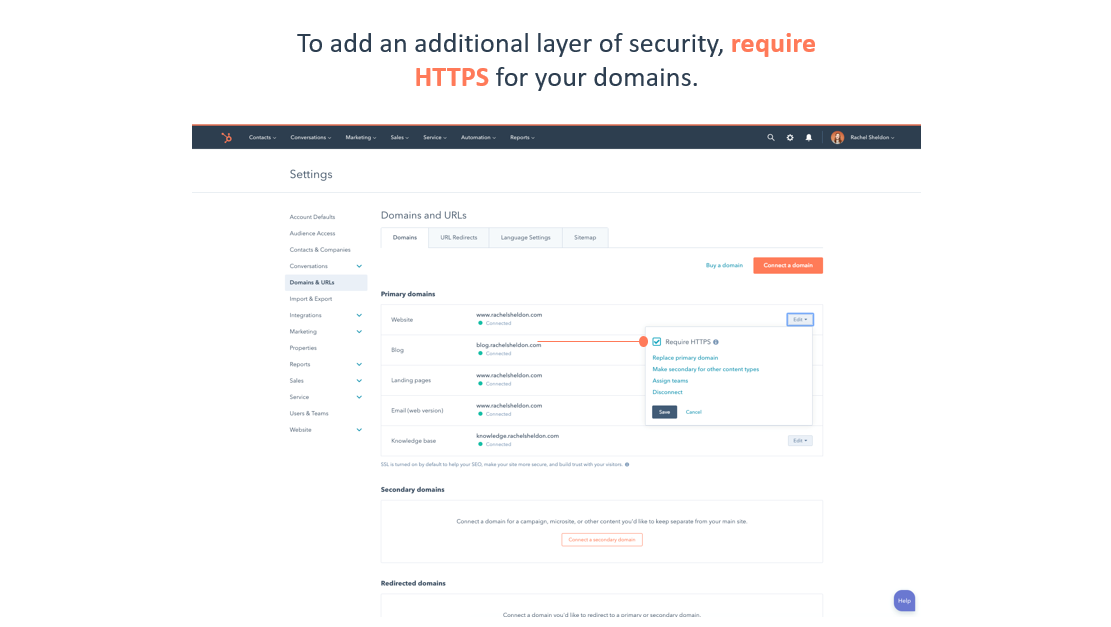
Next, set your domain as the default file manager hosting domain from your website settings.
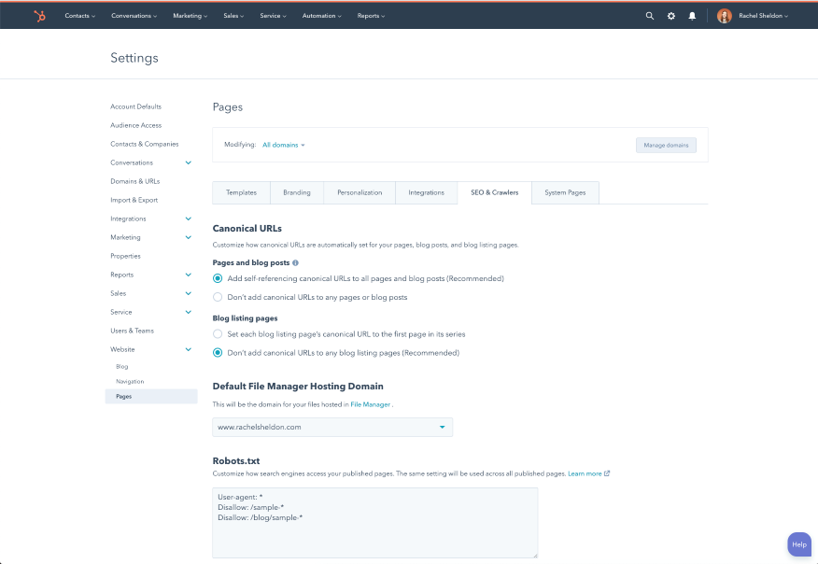
This means that all the files you’ve added to your content, such as images, will be hosted on your website’s domain rather than the default HubSpot domain. If these files are properly optimized, your site can rank for them in search results as well.
3.1.1 Mobile optimization is key
When thinking about how to optimize your website for both search engines and searchers, mobile optimization is key.
Preview your content in the mobile device simulation in the content editors before publishing.
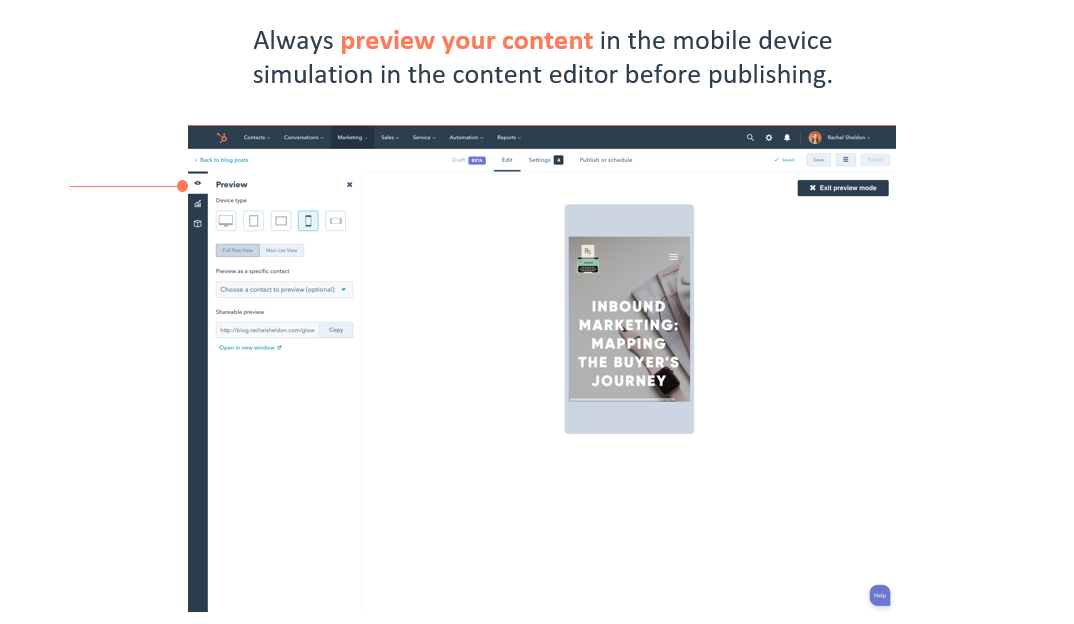
To preview your content on mobile in HubSpot, click on the Preview button on the page and blog editors to check out how your content will look on desktop, tablet, and mobile devices and ensure it looks amazing on all three.
Another way to optimize your website for mobile is by using Google Accelerated Mobile Pages (AMP).
Google AMP is a mobile-specific page format that loads almost instantly on mobile devices by disabling JavaScript files, stylesheets, HubSpot forms, and header and footer HTML.
You can enable Google AMP for your entire blog from your blog settings, or on a post-by-post basis.
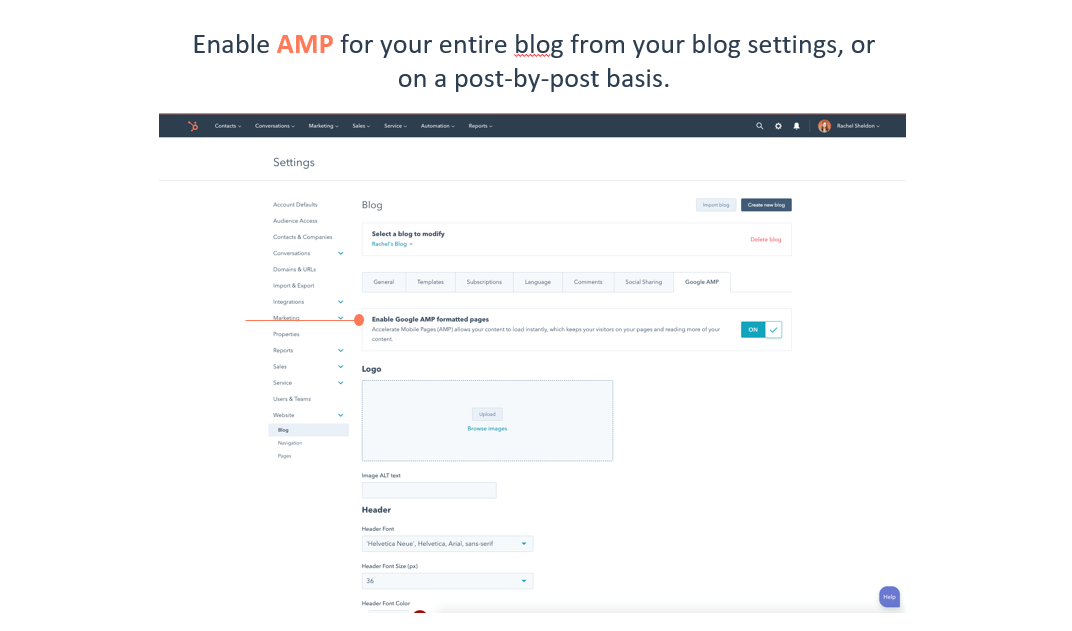
3.2 Technical SEO elements you can customize in HubSpot CMS
There are a few more technical SEO elements that you can customize in the HubSpot CMS. These are your …
- Canonical URLs
- Sitemap
- Robots.txt
HubSpot makes it easy and straightforward for you to make your own custom changes to these elements of your website. That means no need to call a developer or IT professional every time you need to make a small change.
First, you have the option to customize your canonical URLs for your content in HubSpot. A Canonical URL is an HTML element used by search engines to handle duplicate content.
For example, if you have the same content published in multiple places, a canonical URL signals to search engines which version is the preferred one. This is important because search engines prefer websites with unique, valuable content — not content taken from other sources or repeated across multiple pages.
The HubSpot CMS is automatically set up with the recommended configuration for self-referencing canonical URLs, which you can change globally from your website settings. You can also add or edit the canonical URL for an individual page or blog post from the settings tab in the editor.
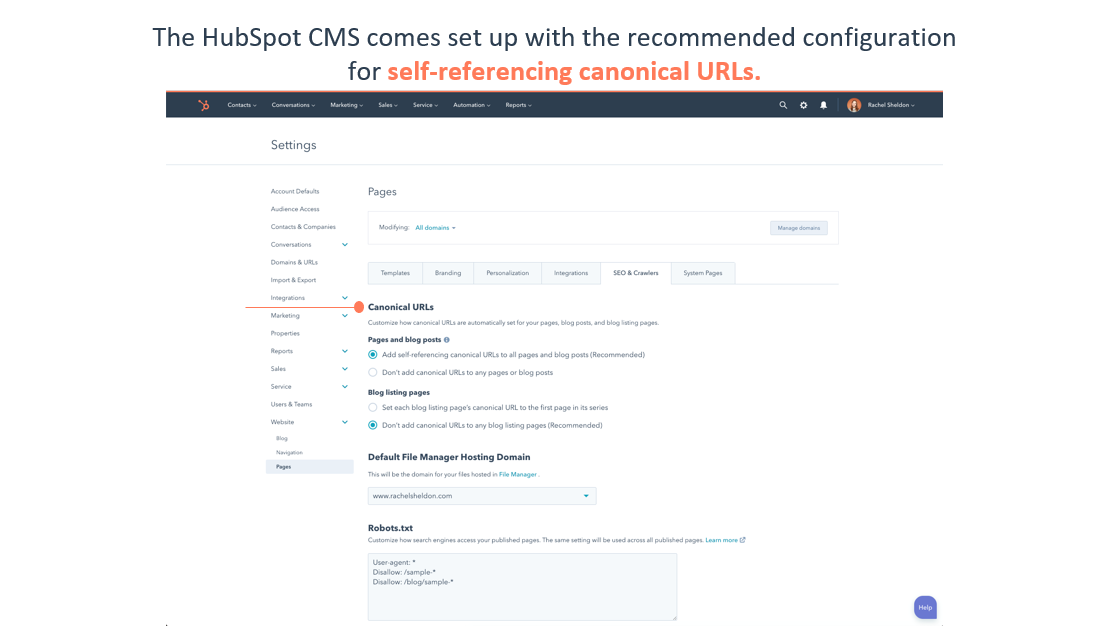
You can also make changes to your sitemap in HubSpot. A sitemap is a file that lists the pages on a website to manage the content that is shown to search engines.
Sitemaps help search engine crawlers determine the structure of your site so that they can crawl it more intelligently. HubSpot automatically adds all your live website pages and blog posts to your sitemap. Landing pages are not added automatically, so if you want them on your sitemap, you can add them manually.
You can edit your sitemap in the “Domains & URLs” section of your settings.
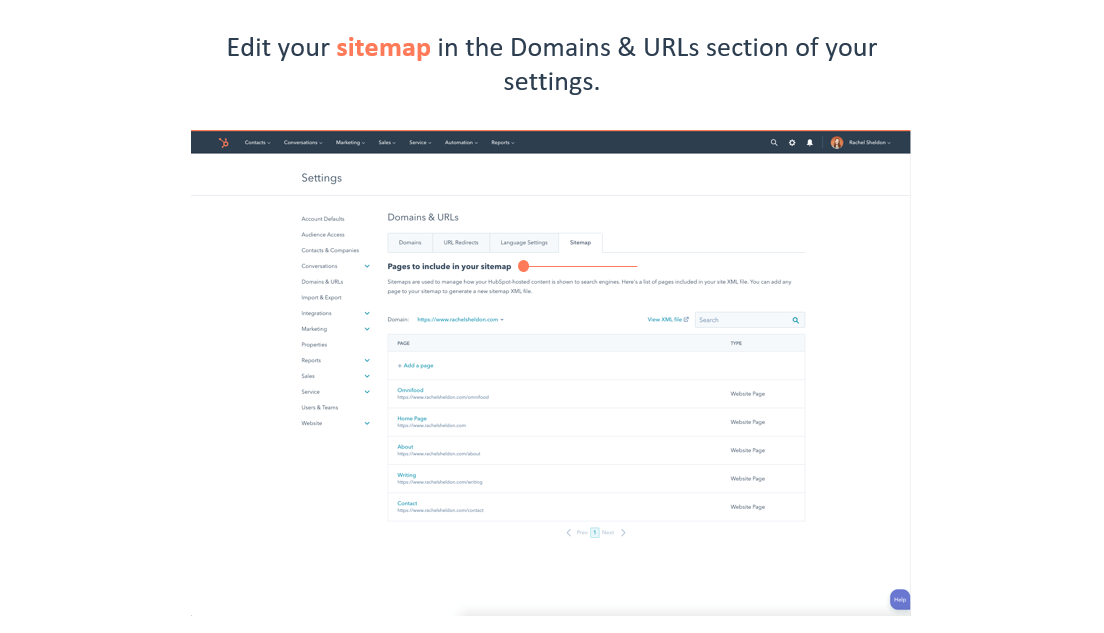
Finally, you can customize your robots.txt file in your website settings. Robots.txt is a text file used to instruct search engine bots on how to crawl the pages on a website.
It is important to remember that removing a page from your sitemap will not explicitly tell search engines that this page should not be indexed. If you want to decide which pages search engine crawlers can and cannot index, you can do so by customizing your robots.txt file.
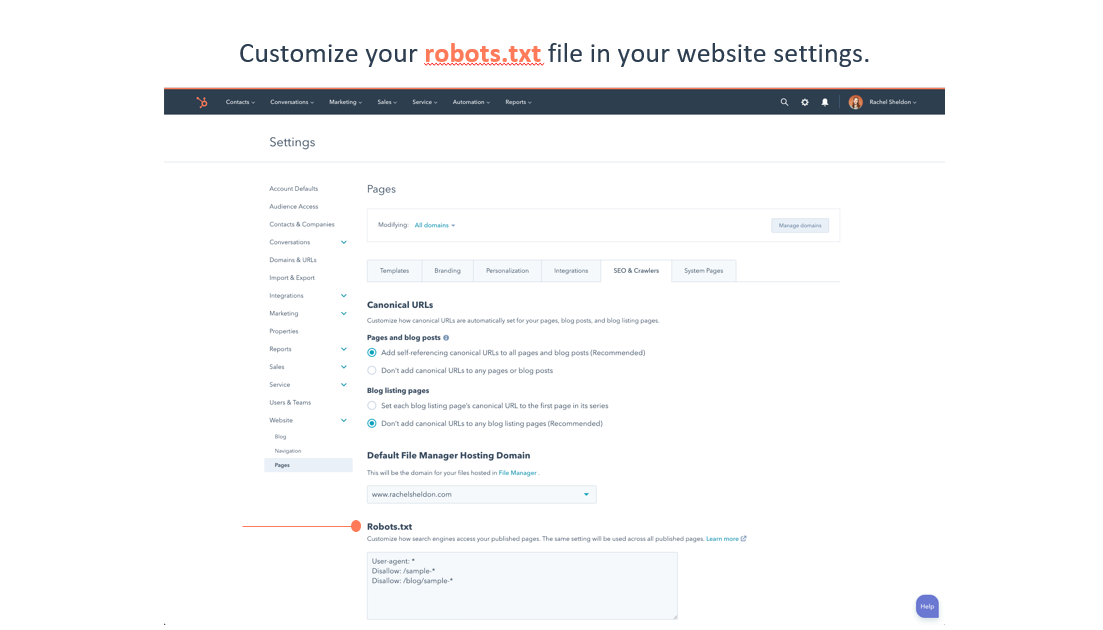
The last recommendation for how to optimize your website for search engines is to implement a topic cluster content strategy. This strategy helps search engines crawl your website pages by rearranging your site architecture into clusters of linked-related content.
3.2.1 Why should you use topic clusters?
An organized linking structure helps crawlers understand how deeply you have covered a topic and what your pages are about. View the linking structure of your topic clusters using the SEO tool.
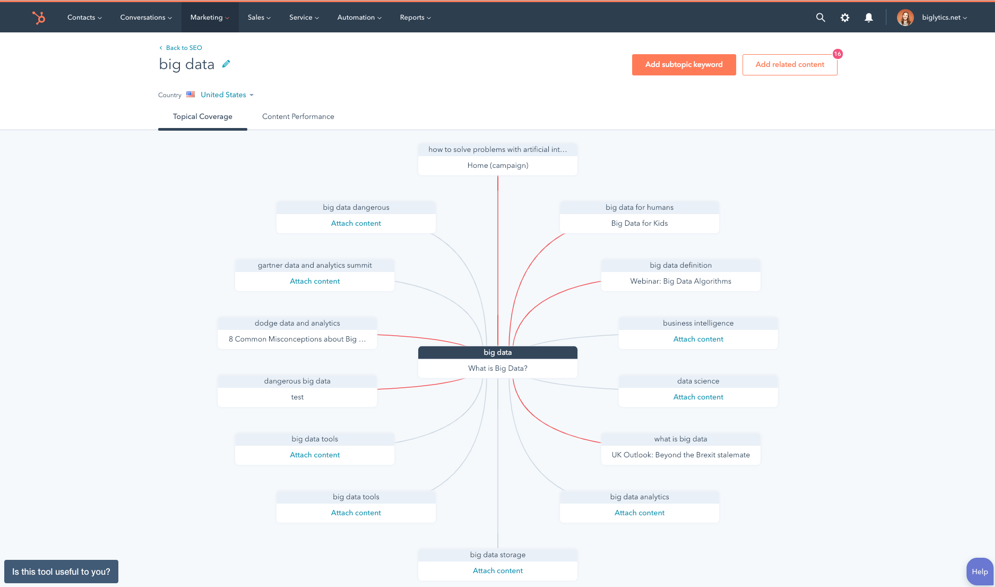
Now you are ready to improve your technical SEO and optimize your website for search engines in the HubSpot CMS.
Take time to review other blog posts on this topic:
Consider taking this HubSpot course to learn the fundamentals of business analytics, managing and visualizing data, and aligning teams around data to make better business decisions.
“Students who join Agency M-1 gain invaluable insight working with real businesses to gain hands-on experience before leaving school. They build connections with executives in the business community and, in many cases, set the path for the beginning of a rewarding digital career.”
-- Brian Meek
Please consider following our student organization, Agency M-1, on Social Media.
Also, enhance your LinkedIn profile as you gain skills and then apply them in a micro-internship! Learn how!
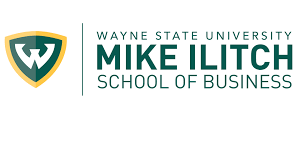

 Rachel Sheldon
Rachel Sheldon
